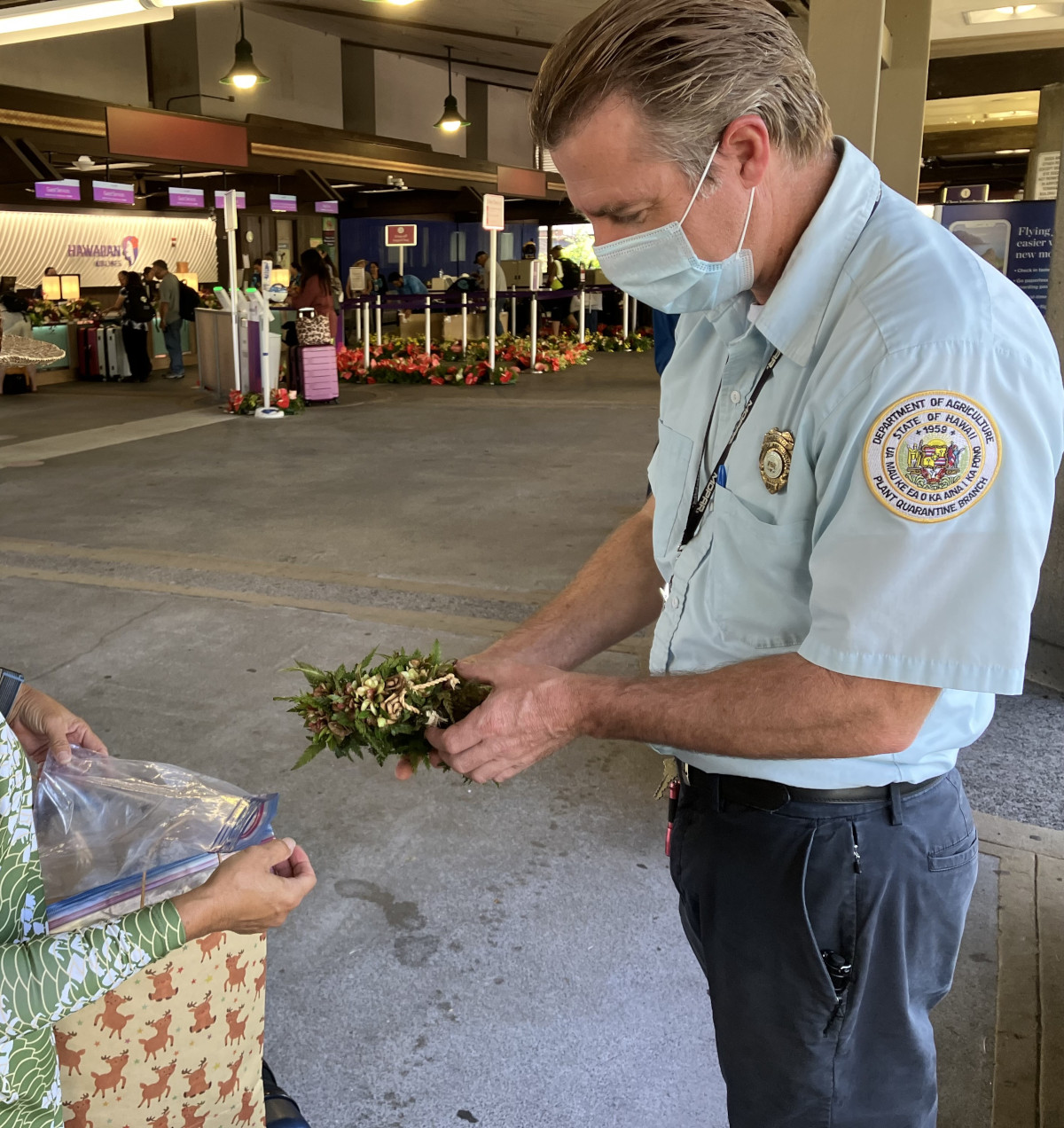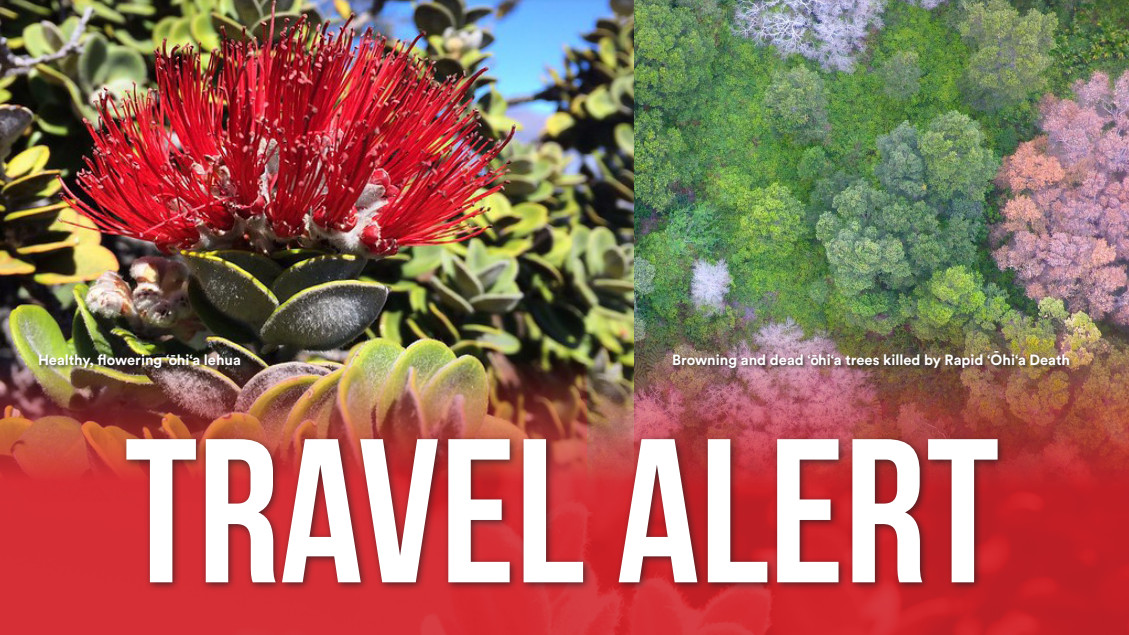(BIVN) – Travelers to and from Hawaiʻi island are being reminded of the continued restriction on the transport of ʻōhiʻa in the hopes of curbing the spread of the rapid ʻōhiʻa death (ROD) fungal plant disease.
The Hawaiʻi Department of Agriculture again shared an alert concerning the ongoing ʻōhiʻa quarantine, ahead of the busy Merrie Monarch Festival set for Hilo next week. The Merrie Monarch Festival begins in Hilo on March 31st and ends April 6th.
ROD has devastated native ʻōhiʻa forests on the island of Hawaiʻi, and has also been detected on other islands in the State of Hawaiʻi.
The quarantine, enacted in 2015, “restricts the movement of ʻōhiʻa plants and plant parts, including flowers, leaves, seeds, stems, twigs, cuttings, untreated wood, logs, mulch, greenwaste and frass (sawdust from boring insects) and any soil” from the Big Island. Transport is only allowed with a permit issued by the HDOA Plant Quarantine Branch (PQB).
“It’s important for the public to know, that although ʻōhiʻa may be taken to Hawai‘i Island from other islands, ʻōhiʻa may not be taken out of Hawai‘i Island no matter where it originated,” said Sharon Hurd, chairperson of the Hawai‘i Board of Agriculture, in a news release. “We appreciate everyone’s cooperation in obeying the quarantine and protecting our native forests. It takes all of us to protect Hawai‘i.”

photo of Hilo PQB inspector, Bernard Rocha, intercepting ʻōhiʻa at Hilo International Airport in 2023.
Inspectors from the Plant Quarantine Branch will be stationed at airports in Hilo and Kona “to collect any ʻōhiʻa material which will be respectfully returned to the native forests on Hawai‘i Island,” the Department of Agriculture says. Inspectors intercepted 31 lei poʻo (head lei) in Hilo and 12 lei poʻo in Kona during last year’s Merrie Monarch Festival.
From the Department of Ag:
The Hawaiʻi Board of Agriculture issued an emergency quarantine in August 2015 to stop the spread of the plant fungus from Hawaiʻi Island to other islands. A permanent quarantine rule was established in 2016. Any person who violates the quarantine rule may be charged with a misdemeanor and fined not less than $100 with a maximum fine of $10,000. For a second offense committed within five years of a prior conviction under this rule, the person or organization shall be fined not less than $500 and not more than $25,000.
The Merrie Monarch Festival draws dozens of hula hālau and hundreds of spectators to Hawai‘i Island. It is important to note that the very act of harvesting ʻōhiʻa may spread the disease, as spores may be carried in soil and by harvesting tools, vehicles, shoes and clothing to uninfected areas.
Multi-agency ROD working groups have been meeting with Native Hawaiian groups, the Merrie Monarch organization and other community groups to provide advice and guidance on the handling of ʻōhiʻa material.
ROD was first noticed in 2010 in Puna. In 2014, the fungus was initially identified as Ceratocystis fimbriata by researchers at the U.S. Department of Agriculture Daniel K. Inouye Agricultural Research Service. Recent research has reclassified Ceratocystis fimbriata into two distinct species that are new to science, Ceratocystis lukuohia and Ceratocystis huliohia. It is estimated that at least one million ʻōhiʻa trees have been killed by ROD just on Hawai‘i Island alone.
The disease was detected on Kauaʻi in 2018 and on O‘ahu in 2019. Also in 2019, one ʻōhiʻa tree on Maui was infected and destroyed and ROD has not been detected on the island since. It is not known how or where the disease entered the state.


by Big Island Video News12:42 pm
on at
STORY SUMMARY
ISLAND OF HAWAIʻI - State officials are reminding Merrie Monarch Festival attendees of the ongoing restriction on the movement of ʻōhiʻa from Hawai`i Island due to the ROD fungal disease.